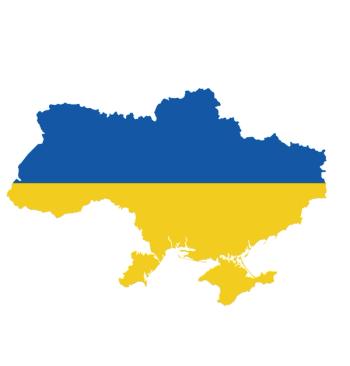
Aphasia Following Acquired Brain Injury
Aphasia is an impairment of language that frequently occurs following neurological injury, particularly stroke. Understanding the various types of aphasia, treatment modalities, and the importance of family education and training can empower clinicians in directing treatment.
An estimated 1.7 million traumatic brain injuries (TBI) occur each yearin the United States.1 Additionally, more than 795,000 individuals experience stroke annually.2 A common consequence of
Despite the frequency of aphasia following TBI, there is limited public awareness. Simmons-Mackie and colleagues conducted face-to-face surveys of individuals in England, the United States, and Australia to determine the number of individuals who had “heard of aphasia” and the number of people who had a “basic knowledge of aphasia.”7 Results of the survey demonstrated that 13.6% of the sample had “heard of aphasia,” but only 5.4% had a “basic knowledge of aphasia.” To increase awareness and understanding of aphasia, June is designated as National Aphasia Awareness Month.
Types of Aphasia
Aphasia can be classified by lesion location and observed language deficits. Several types of aphasia have been described, but 4 types are more frequently encountered: Broca aphasia, Wernicke aphasia, global aphasia, and anomic aphasia.8
Broca aphasia (first described by Pierre Paul Broca in 1861) is caused by damage to the lateral, inferior aspect of the frontal lobe, usually in the left hemisphere of the brain. Broca aphasia is also called nonfluent aphasia and is characterized by difficulty with expression, while comprehension of language is relatively preserved. Individuals with Broca aphasia demonstrate limited vocabulary, severely reduced speech that is limited to short utterances, awkward or uncoordinated formation of sounds, and difficulty writing. Broca aphasia can be very frustrating because the individual knows what they want to say, and they are aware that their attempts to communicate are inaccurate. Broca aphasia is diagnosed in about 12% to 18% of acute and subacute strokes.
Wernicke aphasia (first described by neurologist Carl Wernicke in 1874), is caused by damage to the posterior segment of the superior temporal lobe, usually in the left hemisphere of the brain. Wernicke aphasia, also called fluent aphasia, is characterized by impaired language comprehension, while speech may be relatively preserved. However, though word formation and rate, rhythm, and grammar may be correct, sentences may not make sense. Additionally, the individual may not be aware of the communication errors they are making, and they may become frustrated when the listener does not understand them. Wernicke aphasia is diagnosed in about 15% to 25% of acute and subacute strokes.
Global aphasia results from damage to both Broca and Wernicke areas of the brain, typically in the left hemisphere. Global aphasia is considered among the most severe forms of aphasia. Individuals diagnosed with global aphasia produce few recognizable words, comprehend very little (if any) spoken language, and can neither read nor write. Global aphasia may be diagnosed immediately after a brain injury, but can improve significantly if the brain lesion is not too extensive. Global aphasia is diagnosed in approximately 20% to 40% of acute and subacute strokes.
Anomic aphasia is a mild, fluent type of aphasia, and may involve multiple areas of the brain. Anomic aphasia is characterized by word retrieval failures. Individuals with anomic aphasia are not able to express the words they want to say (particularly nouns and verbs). They often describe objects in detail and may use gestures to demonstrate how an object is used, but cannot find the appropriate word to name the object. Speech fluency, repetition, comprehension, and grammar are relatively preserved. Anomic aphasia is diagnosed in approximately 10% to 25% of acute and subacute strokes.
Treatment
Just as there are different types of aphasia, each individual demonstrates a unique presentation of symptoms; therefore, an individualized treatment program, tailored to the observed language impairment(s), is indicated. Preferably, therapy is delivered by a speech/language pathologist in consultation with other disciplines (ie, neuropsychology, neurology or physiatry, counseling, etc).
Two broad treatment approaches exist for the treatment of aphasia: remedial or restorative therapies, and compensatory strategies. Restorative approaches address the underlying impairment and focus on restoring a lost function, for example, reading paired with spoken naming, or matching pictures with words to improve naming and word-finding impairments.9 Compensatory strategies, also called external strategies, compensate for a lost function. They can include, for example, gesturing or pointing to pictures or icons to compensate for naming or word-finding impairments. It is theorized that both restorative and compensatory approaches promote cortical reorganization after brain injury. Research also indicates that specific pharmacologic agents, such as
Several treatment factors that promote recovery from aphasia have been identified. These factors include, timing (engaging the individual in treatment early, as soon as they are medically stable and able to participate in therapy), intensity (multiple days per week; individualized treatment versus group therapy), and structure, consistency, and repetition.12,13
Treatment for aphasia also involves training for family members or other care givers.14 Strategies that families and caregivers can deploy to improve expression and comprehension include:
-Keeping communication clear and simple (short phrases, simple vocabulary) and speaking slowly
-After making a statement or asking a question, give the individual time to formulate their thoughts and respond; do not “pepper” them with questions or overwhelm them with too much information
-Reduce background noise/distractions; face the individual so they can see your face
-Use all forms of communication to reinforce what you are saying—gestures, exaggerated facial expression, drawings or pictures, etc
-Ask questions that require only a “yes/no” response versus open ended questions
-Narrow the topic, “I am talking about shopping,” or “Are you talking about our summer vacation?”
Families can also consult the
Recovery
Aphasia is treatable. While most individuals with aphasia demonstrate some recovery, particularly early after injury, a large majority demonstrate substantial improvement.5 Perderson and colleagues found that while 61% of their sample still had aphasia 1 year after stroke, the aphasia has progressed to a milder form of aphasia and the change was from a nonfluent to a fluent form. They also found evidence of recovery for both comprehension and speech.8
Determinants of recovery from aphasia include initial severity of brain injury, level of intelligence and communication ability pre-injury, emotional and affective adjustment to injury, and the quality, intensity and duration of therapy (as mentioned in the previous section).3,5,8 Type of aphasia, age, and gender have not been shown to be reliable determinants of recovery from aphasia.8
Concluding Thoughts
Aphasia is an impairment of language that frequently occurs following neurological injury, particularly stroke. While aphasia is a common consequence of brain injury, few people have a basic understanding of aphasia. Understanding the various types of aphasia, treatment modalities, and the importance of family education and training can empower clinicians in directing care.
Dr Seale is the regional director of clinical services at the Centre for Neuro Skills, which operates post-acute brain injury rehabilitation programs in California and Texas. He is licensed in Texas as a chemical dependency counselor and psychological associate with independent practice. He also holds a clinical appointment at the University of Texas Medical Branch (UTMB) in Galveston in the Department of Rehabilitation Sciences.
References
1. Faul M, Xu L, Wald MM, et al.
2. Williams GR.
3. Damasio AR.
4. McNeil MR, Pratt SR.
5. Hillis AE.
6. Sarno MT.
7. Simons-Mackie N, Code C, Armstrong E, et al.
8. Pedersen PM, Vinter K, Olsen TS.
9. Beeson PM, Egnor H.
10. Walker-Batson D, Curtis S, Natarajan R, et al.
11. Berube S, Hillis AE.
12. Robey RR.
13. Bhogal SK, Teasell R, Speehley M.
14. Simmons-Mackie N, Kearns K, Potechin G.
Newsletter
Receive trusted psychiatric news, expert analysis, and clinical insights — subscribe today to support your practice and your patients.

















